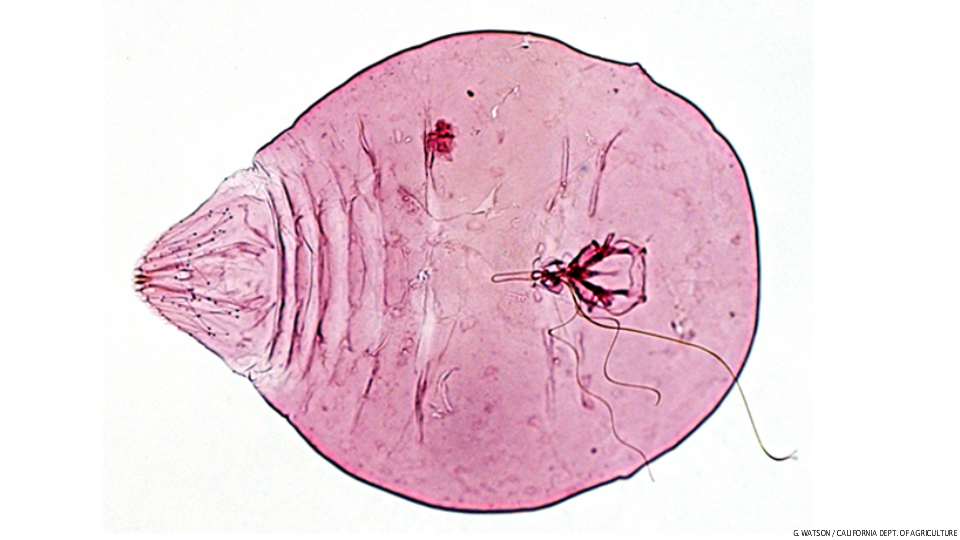ADVERTISEMENT
Filtered by: Scitech
SciTech
How scientists caught the killer coco plague bug

Aspidiotus rigidus
With some old-fashioned taxonomy, scientists managed to correct a case of mistaken identity on the pest threatening coconut trees in the Philippines, a science news site reported.
Insect biosystematist Gillian Watson of the California Department of Food and Agriculture in Sacramento managed to identify the culprit as Aspidiotus rigidus, exonerating A. destructor, the species initially linked to the threat.
An article on ScienceNews.org said Watson found the insects threatening Philippine coconut trees had a more rigid cuticle.
Watson also noted pictures of the scale insect taken in the Philippines showed a crescent shape in the laid eggs, again pointing to A. rigidus.
"The true killer A. rigidus, an invasive species, has few native enemies in the Philippines. It also lives 1.5 times as long as the wrongly accused A. destructor," it said.
It also noted an outbreak between Indonesian islands in 2005 was quelled by transferring an A. rigidus predator from its native habitat.
Both A. destructor and A. rigidus have caused coconut plagues in Indonesia, killing the coconut palms by injecting a chemical that neutralizes the chlorophyll in their leaves.
This leaves the leaves unable to absorb energy from sunlight.
But ScienceNews said solving the problem would need identifying the right suspect.
While Philippine authorities initially blamed A. destructor, "researchers’ detective work led them to conclude that a closely related bug, A. rigidus, has been doing the dirty work."
The scale insects had started threatening the coconut trees in the Philippines as early as 2009, with up to 60 million of the insects encrusting the lower leaf surfaces of a single tree.
“The infestation rate was so fast that the local government was caught flat-footed, and poor farmers lacked the resources to cope,” said University of the Philippines Los Banos College of Agriculture entomologist Candida Adalla, one of the study's co-authors.
"If the pest continues unabated, the Philippines could lose 60 percent of its coconut crop, denting its $1 billion in annual export earnings, according to Philippines government estimates," ScienceNews said.
On the other hand, Watson noted A. destructor has lived in the Philippines for over 100 years and has been "controlled by natural predators for a very long time.”
Watson also studied samples shipped by Adalla. — Joel Locsin/TJD, GMA News
More Videos
Most Popular




